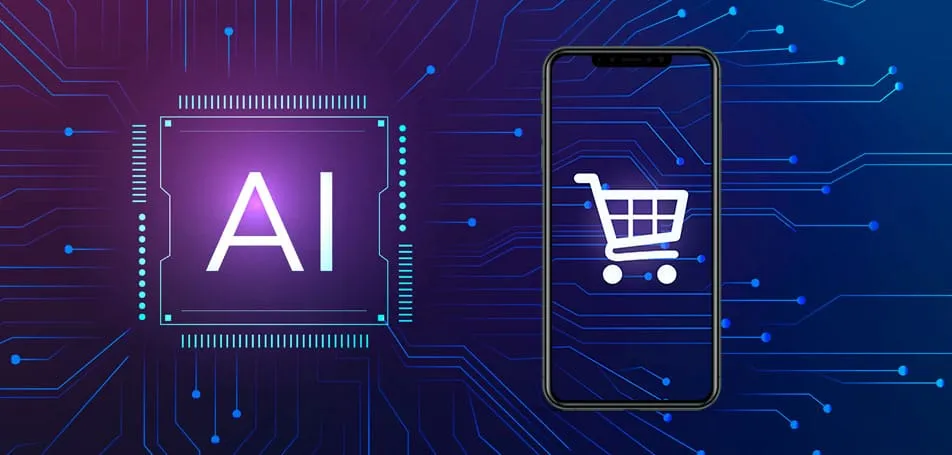
Can AI Keep Driving Revenue & Growth for Online Retailers?

In today’s digital-first economy, online retailers are constantly searching for ways to stand out in an increasingly competitive landscape. One of the most powerful tools transforming e-commerce is AI-driven personalisation. By leveraging artificial intelligence, retailers can create highly tailored shopping experiences that not only boost revenue but also drive customer engagement, loyalty, and long-term growth.
Let’s dive into how AI-driven personalisation is transforming online retail and revolutionising digital success:
AI-Driven Product Recommendations: More Relevant, More Revenue
Personalised product recommendations have become the backbone of online retail success. AI analyses vast amounts of customer data, including browsing history, purchase patterns, and preferences, to suggest relevant products.
🔹 Example: Amazon’s AI recommendation engine is responsible for up to 35% of its total sales, showcasing the power of personalisation in driving revenue.
Impact:
- Higher conversion rates due to relevant suggestions
- Increased average order value (AOV) with cross-selling and upselling strategies
- Enhanced customer experience, leading to greater satisfaction and retention
AI-Powered Search & Discovery: Helping Shoppers Find What They Want
A major pain point for online shoppers is finding the right product quickly. AI improves search functionality by using natural language processing (NLP) and machine learning to deliver highly relevant search results.
🔹 Example: E-commerce platforms like Shopify and Zalando use AI-powered visual search, allowing users to upload images and find similar products instantly.
Impact:
- Faster, more intuitive search results improve user satisfaction
- Reduced bounce rates, keeping potential buyers engaged
- Higher purchase likelihood by delivering hyper-relevant search results
Dynamic Pricing: AI Maximises Profitability
AI enables real-time pricing adjustments based on demand, competitor prices, and customer behaviour. Dynamic pricing helps online retailers optimise profit margins while staying competitive.
🔹 Example: Airlines, ride-hailing apps (Uber, Lyft), and major e-commerce players like Amazon use AI-driven pricing models to maximise revenue.
Impact:
- Higher sales volume by offering competitive pricing
- Maximised profit margins with intelligent price adjustments
- Improved customer trust by offering fair, demand-driven pricing
AI-Enhanced Email & Ad Personalisation: Higher Engagement & Conversions
AI enables online retailers to deliver hyper-personalised marketing campaigns through email, social media, and display ads. Instead of generic promotions, customers receive tailored messages that match their interests and shopping habits.
🔹 Example: Fashion brands like ASOS and Sephora use AI-powered email marketing to send personalised product recommendations, cart reminders, and time-sensitive offers.
Impact:
- Higher click-through rates (CTR) and email open rates
- Increased ad ROI with targeted and relevant promotions
- Improved customer retention by keeping shoppers engaged
AI-Driven Chatbots & Virtual Assistants: 24/7 Personal Shopping Support
AI-powered chatbots and virtual assistants are transforming customer service by providing instant, personalised support. These smart assistants help users find products, track orders, and resolve queries in real-time.
🔹 Example: H&M’s chatbot suggests outfits based on customer preferences, offering a seamless and engaging shopping experience.
Impact:
- Reduced customer support costs while improving response times
- Enhanced customer experience with personalised recommendations
- Increased conversion rates by assisting hesitant shoppers in real time
AI-Powered Inventory & Supply Chain Optimisation: Reducing Costs & Wastage
AI helps online retailers predict demand, manage inventory efficiently, and reduce supply chain inefficiencies. By analysing historical sales data and market trends, AI ensures that retailers stock the right products at the right time.
🔹 Example: Walmart and Zara use AI-driven demand forecasting to optimise inventory, preventing stockouts and overstocking.
Impact:
- Lower operational costs by reducing excess inventory
- Fewer stockouts, improving customer satisfaction
- Better supply chain efficiency, leading to faster deliveries
The Future of AI in Online Retail
As AI continues to evolve, its impact on online retail will only grow. Emerging innovations such as AI-generated product descriptions, hyper-personalised virtual shopping assistants, and real-time customer sentiment analysis will further transform the shopping experience.
Key future trends include:
- AI-powered voice commerce — Shopping via Alexa, Google Assistant
- Augmented Reality (AR) shopping experiences — Trying on clothes or visualising furniture
- Predictive AI shopping — Retailers automatically shipping products before customers even order them
Final Thoughts: AI Personalisation is No Longer Optional
AI-driven personalisation is redefining the online retail landscape by making shopping experiences smarter, more engaging, and highly profitable. Retailers that fail to adopt AI will struggle to keep up with competitors who offer a seamless, personalised experience across all digital channels.
For online retailers, the message is clear: AI personalisation isn’t just a trend — it’s the key to driving revenue, growth, and customer loyalty in the digital age.
What’s your take on AI in e-commerce? Let’s discuss in the comments! 🚀



Ameet Sinha